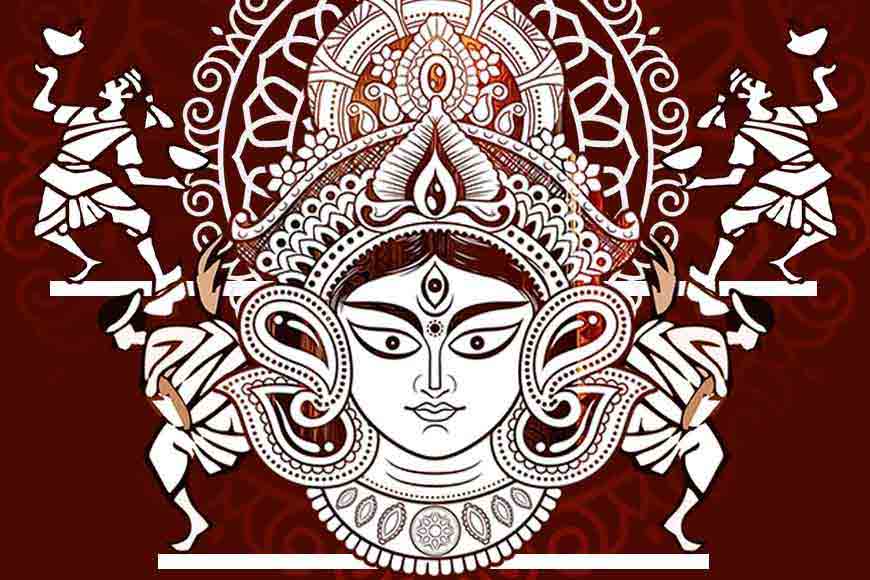Tradition reigns at 300-year-old Balisai Bhuiangarh Zamindarbari Durga Puja - GetBengal story

Representative image
Durga Puja is just around the corner and Bengalis around the world are gearing up to celebrate the annual festival. Kolkata is being decked up for the grand carnival. In 2021, the United Nations Educational, Scientific and Cultural Organization (UNESCO) declared Durga Puja as an Intangible Cultural Heritage of Humanity. From the medieval era to the present time, Durga Puja is celebrated as a socio-cultural event, while maintaining the roots of religious worship. The occasion provides a valuable perspective into the power of the ritual to create an enduring platform for the collective spirit.
However, Durga Puja was not always like this. In the early 19th century, Durga Puja was held only in the houses of the rich zamindars (landlords) where their subjects, the villagers would be invited to witness the puja and partake in lavish ‘bhog’ (the food that is offered to the deity) which would be on the house of the landed gentry. Gradually as times changed, so did the lot of the nobility. With the abolition of the Zamindari system, the financial condition of many of these aristocratic families nose-dived, and many of them were forced to curtail their spending to continue the puja on a small scale while many had to discontinue the annual festival due to lack of funds.
Still, there are a number of ‘Rajbari’ or ‘Zamindar bari’ tucked in the rural hinterland of Bengal that have carried forward their tradition and continue to celebrate Durga Puja the way it was celebrated centuries ago. Balisai is a pristine little village on the sea coast of Ramnagar in East Midnapore district close to Digha. The Balisai Bhuiangarh Zamindar family initiated Durga Puja about 300 years ago in their ancestral home. Since then, Durga Puja has been an integral part of this heritage mansion and it has since been celebrated with undeviating regularity. This house has stood the test of time and witnessed many social and political upheavals over centuries while sheltering generations of Bhuiangarh zamindar family members who have been organizing the annual Durga Puja piously, adhering to age-old family customs.
The Bhuiangarh zamindar family puja begins with an unusual custom: canons are fired to herald the arrival of Goddess Durga. The idols are carried to the ‘Thakur dalan’ or Durga Dalan (an arched portico along the central courtyard within the premise of the building) in palanquins. Durga Puja is organized following the tradition that started 300 years ago.
During colonial rule, there were a number of wealthy and influential feudal lords in Bengal and the house of Balisai Bhuiangarh was one of them. The family fiefdom comprised extensive territory encompassing parts of Bengal and Odisha and they played a pivotal role in the development of the region. Tradition rules at the former Balisai Bhuiangarh Zamindar house. The family continues to follow the age-old rituals and ‘Ekchala’ idols, depicting Goddess Durga and her four children against a common backdrop, are sculpted and worshipped here as was done since Puja was initiated here centuries ago. There is a pond named ‘Devi Pukur’ close to the Bhuiangarh Zamindar mansion. The idols are carried in palanquins and ushered inside the mandap (pavilion set for puja rituals) amid much fanfare. There are specific instructions and rituals handed down for generations that are strictly adhered to while sculpting the idols. Before Puja begins in the Thakur Dalan, there is an ancient wood apple tree at the entrance of the mansion where the Zamindar family first offers puja to the Goddess and then she is ushered in the mandap.
Since its inception, the Balisai Bhuiangarh Zamindars organized and financed Durga Puja and the tradition continues. However, it has always been a community event where people from all around have been encouraged to participate. During Puja, people gather in their house from neighbouring villages to offer prayers to the Goddess and partake ‘bhog’. During Sasthi, Saptami, Ashtami, Navami and Dashami, the five days of worship, access to the pandal inside the estate is open to all. In the olden days, zamindars hosted five days of recreation for guests and their subjects. These included popular forms of entertainment like performances of ‘Pala gaan’ (narrative opera) and Jatra Pala (folk theatre of Bengal). Villagers from far off trooped in large numbers to watch these nightlong performances.
In the past, animal sacrifice was an integral part of Durga Puja but that tradition has been stopped. The Vedic rituals of ‘holm and yajna’ (oblation of fire or offering prayers to God in front of fire) are carried out daily during those auspicious days. The Balisai Bhuinyagarh Zamindar Bari was constructed more than three centuries ago and like any old property tends to come with its share of problems. This heritage building is also scrambling to deal with the impact of unusual weather phenomena. Amid the escalating climate crisis, it is encountering heavy rain, rising humidity, and new extremes of heat and cold. Cracks have appeared in different parts of the sprawling mansion, the plaster is peeling off and the house is in dire need of essential repairs. The present members of the erstwhile Zamindar family have taken the initiative to get the restoration work done before the Pujas. The adjoining temple is also being repaired and awaiting a makeover with fresh coats of paint.
As Durga Puja draws near, there is excitement in the air. The entire village is looking forward to visit the Thakur Dalan and worship Ma Durga. Meanwhile, members of the Zamindar family who live in different parts of the country or abroad, are gearing up to flock to their ancestral home for a family reunion and join in the revelry and catch up with family and friends. Even in this age of big-budget theme pujas, the Balisai Bhuinyagarh Zamindar Bari puja remains a crowd puller with believers and revelers drawn from every nook and corner of the locality.











